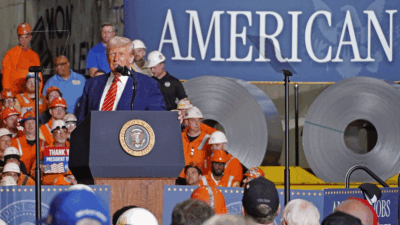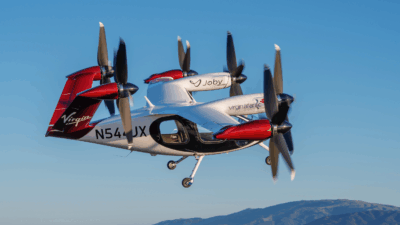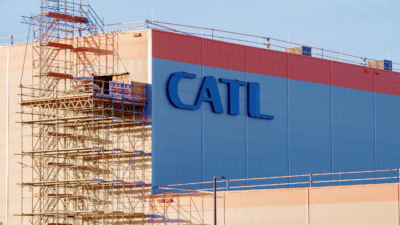
Sign up for smart news, insights, and analysis on the biggest financial stories of the day.
Sixty years ago last month, with the space race between the US and Soviet Union heating up, John F. Kennedy delivered his famous “We choose to go to the Moon” speech. A moonshot was a chance for both nations to prove their ideological superiority. But the space race was as much about winning history’s greatest photo op as it was about establishing critically important space infrastructure like space stations or satellite networks.
Kennedy’s dream of landing an American on the moon before any other nation and before the end of the sixties would of course come true, even if it happened six years too late for him to see it. But by 1972, three years after the successful Apollo 11 mission, astronauts from the Apollo 17 mission departed from their lunar destination — and no human has returned since.
After decades of dormancy, the space race has been reignited. Not between cold-warring nations, but between some of the world’s most valuable startups, owned by some of the world’s richest men. The end goals of space race 2.0 are less obvious: establishing a colony on Mars? A mining facility on the moon? Pure tourism? Escaping earth before climate catastrophe?
But there are two shared if totally terrestrial targets: juicy government contracts and big-time fundraising rounds. In other words, companies are choosing to go to space not because it is easy, but because it is lucrative.
So suit up and strap yourself in. Today we’re going boldly where no deep dive has gone before – into the world of SpaceX, Blue Origin, Virgin Galactic, and beyond.
Moonage Daydreams
NASA and the Soviet space program may have monopolized space tech and travel in the sixties and seventies, but private enterprise wasn’t far behind. Space was a good business long before new-age billionaires Jeff Bezos, Elon Musk, and Richard Branson made it their playpen:
- In fact, a month before JFK declared his intentions in 1962 to reach the moon, he signed into law the Communications Satellite Act, a controversial piece of legislation that nonetheless cleared the deck for private global satellite communications systems — with NASA, the FCC, and the executive branch all playing critical oversight roles, and state-owned launch vehicles being used to rocket the satellites into orbit.
- Meanwhile, scores of private companies were employed by NASA to help develop technologies during the maximum overdrive effort to deliver Neil Armstrong, Buzz Aldrin, and Michael Collins to the moon (well, at least to the moon’s orbit, in the latter’s case).
As part of the deregulation craze of the 1980s, Ronald Reagan passed the Commercial Space Launch Act of 1984, which declared that “the general welfare of the United States requires that the Administration seek and encourage, to the maximum extent possible, the fullest commercial use of space.” The law finally privatized the use of expendable launch vehicles (ELVs), enabling corporations to launch their own satellites and spacecraft without the need to rely on NASA and its evolving shuttle program.
Star Wars: Defense contractors were naturally the biggest beneficiaries of the US government’s space efforts. In the late 90s, Lockheed Martin and Boeing scored $3 billion divided between 28 launch contracts (Boeing earned 19, Lockheed the other 9) to partner with the government’s Evolved Expendable Launch Vehicles program, tasked primarily with shipping military satellites into orbit.
Redubbed to National Security Space Launch, that project lasted until 2019 — providing the financial rocket fuel for SpaceX, among others.
Star Trek Pitch Deck: It wasn’t until 2015, however, that the privatized space industry would truly blast off.
That year, the bipartisan SPACE Act — that’d be the Spurring Private Aerospace Competitiveness and Entrepreneurship Act, for short — granted US citizens and US-based companies permission to engage in the commercial exploration and exploitation of “space resources,” such as water, minerals, and whatever else can be extracted from asteroids, moons, or other planets (biological life forms — read: aliens — remain notably off-limits under the law). Sure, this sounds like the premise of every corporate-space-mission-gone-wrong movie Hollywood has ever made, but the legislation opened up an entire solar system of fiscal possibility to private companies.
The space industry subsequently exploded. Billionaires with too much money for one planet set their sights on the stars. In addition to SpaceX, Blue Origin, and Virgin Galactic, companies like Robert Bigelow’s Bigelow Aerospace, Stratolaunch Systems, and Planetary Resources drew massive investments from deep-pocketed investors, including Paul Allen, Ross Perot Jr., and Larry Page.
In 2019, NASA announced plans to open up the International Space Station to commercial ventures — and the race was on to launch regular ol’ (non-astronaut, but usually still very, very rich) humans high beyond the clouds. Branson and Bezos made history in the Summer of 2021 when they reached space themselves. But it was the technology behind Bezos’ trip in particular that’s most revolutionary.
Reduce, Reuse, and Recycle Rockets: If there’s one key innovation that’s slung private space enterprise beyond the capabilities of NASA, it’s the vertical takeoff, vertical landing (VTVL) rocket.
Blasting off from Earth is so easy they did it decades ago with computers with processing powers far less significant than the phones we carry in our pocket every day. But landing back on Earth was the tricky part. The past decade of private space development changed that equation – and it’s where Blue Origin and SpaceX stand apart from the competition:
- After completing the first-ever successful vertical landing following an uncrewed test flight that reached space in 2015, Blue Origin’s New Shepard rocket booster prepared for the first-ever successful vertical landing of a crewed flight. That happened in July last year, when Bezos, his brother Mark, the 82-year-old Wally Funk (the oldest human to leave Earth), and auction-winning Dutch teenager Oliver Daemen blasted into space and returned to Earth 11 minutes later.
- SpaceX’s Grasshopper, Falcon 9, and Starhopper spacecraft have made several successful VTVL trips, including ones to launch a network of satellites into orbit and conduct cargo resupply missions to the International Space Station.
The net effect is to make space travel far easier, and cheaper, than ever before.
Perfecting reusable rockets is just one of the major battles between the two companies. Another, to secure a lucrative government contract, has already been waged — with SpaceX emerging as the victor for now. It’s a space race with an end goal that harkens back to the 1960s: placing American astronauts on the moon.
Earning Uncle Sam’s Favor: In May 2020, NASA announced it wanted to revitalize its lunar program — and it was willing to spend big bucks to do so. A $2.9 billion contract was on the table, and SpaceX, Blue Origin, and aerospace manufacturer Dynetics were selected to compete for the grand prize. The government agency was willing to pay for two missions: one unmanned demonstration and another to deliver the actual astronauts — and signaled it would select at least two of the companies to work with.
Ultimately, NASA awarded the contract solely to Musk’s firm in April 2021, and the public-private partnership set a goal to develop a giant rocket called Starship to return to the moon as soon as 2024. Experts say the massive contract primes SpaceX to assume a pole position as the leading private space firm in the years to come.
Second Chances: Rebuffed, Bezos even offered to cover $2 billion of the costs in exchange for the contract, and filed an appeal with the Government Accountability Office. The maneuver failed, and Blue Origin remains on the sidelines. But in March this year, NASA announced another round of contracts available for future lunar missions. Blue Origin, now partnered with Lockheed Martin, is considered a heavy favorite to earn the nod, according to a Washington Post report.
Companies to Watch
Branson’s Virgin Galactic primarily remains a space tourism company, with an emphasis on suborbital space flights. Its goal is to launch about three ships a month by 2023, and claims to have sold around 700 tickets already for the low everyday price of $450,000 a pop. The company went public via a SPAC merger in October 2019, soaring to new heights during the bull run of 2021 before tumbling back down to earth. Shares now trade about 50% below their initial listing price.
Lunar-focused Intuitive Machines announced last month it would go public via a SPAC merger at a valuation of around $1 billion, and has won three NASA contracts worth around $233 million combined. Rocket Lab, Momentous, and Astra Space all boarded SPAC ships in 2021 as well.
Not to be overlooked, aviation king Boeing has long been at work developing reusable space taxis, and its Space Launch System is considered the most powerful rocket ever created.
Blue Origin is still playing catchup to SpaceX, but Bezos remains committed; the Amazon founder is said to have earmarked $1 billion a year to fund the venture. It’s a tad bigger than most retirement projects — Bezos stepped down as Amazon CEO in July 2021 — but the world’s third richest man can certainly afford it.
And that takes us to SpaceX. The company raised $250 million in equity in August, bringing its total fundraising in 2022 to $2 billion and lifetime fundraising to $10 billion, according to Crunchbase. A $1.7 billion fundraising round in May valued the company at an eye-popping $127 billion, according to CNBC. Whatever you think about Musk, the man sure knows how to keep shareholders interested — and propel his ventures to otherworldly valuations.











